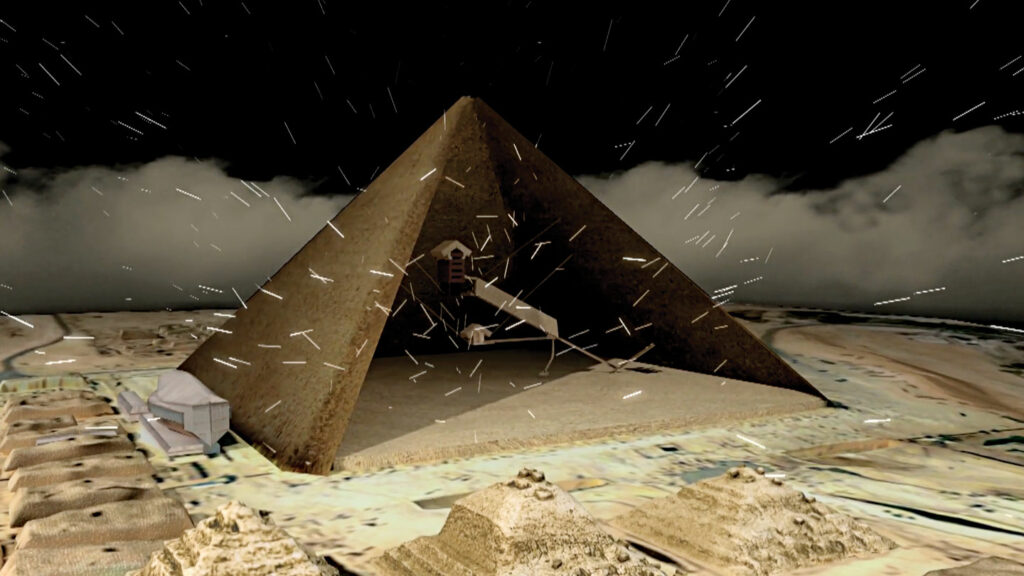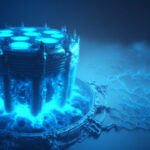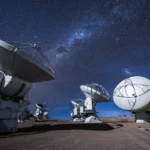In 1936, particle physicist Isidor Isaac Rabi famously quipped, “Who ordered that?” when an unexpected particle made its debut in the physics world. This curious particle, called the muon, had peculiar properties and seemed to exist without a clear purpose. Fast forward to today, and muons have become indispensable tools in both fundamental science and cutting-edge technology, helping us probe ancient monuments and verify Einstein’s theories. But what exactly is a muon, and why does it matter?
A Particle Nobody Asked For
Muons are subatomic particles, part of the lepton family, and are like bulked-up cousins of the electron. They’re about 200 times heavier, negatively charged, and surprisingly fleeting—they decay into other particles after just 2.2 microseconds. Discovered serendipitously in the 1930s, muons left mysterious tracks in cloud chambers, puzzling scientists who had no idea why they existed. But as physics often goes, the unexpected eventually found its place in the Standard Model, the elegant framework that organizes all known particles into a kind of cosmic periodic table.
Unlike electrons, muons were not predicted but were embraced once found. Their hefty mass and fleeting existence turned out to be gateways to groundbreaking discoveries. Initially a curiosity, the muon has since become a star player in experiments testing the limits of physics and even in exploring the innards of colossal ancient structures.
The Muon’s Journey to Earth
Muons are cosmic travelers, created high in Earth’s atmosphere when high-energy cosmic rays, mainly protons, collide with air molecules. These collisions generate a shower of particles, including muons, which rain down on the Earth in vast numbers. Despite their short lifespan, muons traveling close to the speed of light exhibit a fascinating quirk predicted by Einstein’s theory of relativity: time dilation.
For muons, 2.2 microseconds is plenty of time to descend the 10 kilometers from the upper atmosphere to the Earth’s surface. In their own frame of reference, they don’t live any longer, but from our perspective, their “clocks” run slower due to their incredible speeds. Thanks to time dilation, millions of muons reach the ground every second—living proof of special relativity in action.
Muons as Cosmic Probes
As scientists unraveled the nature of muons, they realized their unique properties could be used for more than verifying Einstein. Muons are highly penetrating, able to pass through vast amounts of material with minimal interaction, but they are also slightly deflected by the density of the matter they pass through. This combination makes them ideal for mapping the interiors of otherwise impenetrable structures, from mountains to pyramids.
When muons pass through dense rock or metal, their paths deviate slightly compared to when they pass through hollow or less dense materials. By placing muon detectors around or within a structure, scientists can measure these deviations and reconstruct a 3D map of its internal composition—a technique known as muon tomography.
Peering Inside Ancient Monuments
One of the most thrilling applications of muon tomography has been in archaeology, particularly in uncovering the secrets of the Great Pyramid of Giza. For centuries, the inner workings of this ancient marvel have remained largely a mystery. Traditional methods like excavation or drilling are off the table—they would irreparably damage the monument. But with muons, we can take a non-invasive peek inside.
In recent years, scientists placed muon detectors around the pyramid and found evidence of previously unknown chambers. In 2023, a hidden void was confirmed near the pyramid’s entrance. This space, undisturbed for over 4,500 years, might have been designed to relieve pressure from the massive stone blocks above the entrance. Further investigations have hinted at a vast “big void” above the Grand Gallery, measuring an incredible 400 square meters. What secrets could it hold? The research continues, but it’s clear that muons have become indispensable in unraveling the mysteries of ancient civilizations.

Beyond Archaeology: The Muon’s Modern Mission
The muon’s story doesn’t end with pyramids. This tiny particle has also proven invaluable in other scientific endeavors. For instance, muon tomography is used to study the magma chambers of volcanoes, helping predict eruptions by revealing changes in density. It’s also been deployed to inspect nuclear reactors and search for contraband in cargo containers.
The versatility of the muon is a testament to the power of fundamental research. What began as an obscure particle in the 1930s has become a tool for solving practical problems across disciplines, from geology to security.
Science, Art, and Interdisciplinary Discovery
The marriage of fundamental physics and archaeology illustrates the beauty of interdisciplinary science. Fields once thought unrelated—particle physics and Egyptology, for instance—are now collaborating to reveal humanity’s greatest achievements. Techniques like radioactive dating, X-ray fluorescence, and DNA analysis are already staples of archaeology, and muon tomography adds a cutting-edge tool to the mix.
This blend of art and science isn’t just about studying the past; it’s about shaping the future. As we learn more about the achievements of ancient civilizations, we gain insights into resilience, innovation, and the sheer determination that built wonders like the Great Pyramid—monuments so enduring that they’ve earned the saying: “Man fears time, but time fears the pyramids.”
The Muon Legacy
Standing before the pyramids, gazing at their immensity and precision, it’s hard not to feel awestruck. And now, thanks to muons, we’re peeling back the layers of history encoded in these monumental structures. From verifying Einstein’s theories to uncovering hidden chambers, muons remind us that even the tiniest particles can reveal the grandest mysteries. So, the next time you ponder the cosmos or marvel at an ancient wonder, give a nod to the humble muon—a particle that’s helping us connect the past, present, and future in ways we never imagined.



